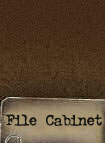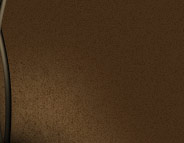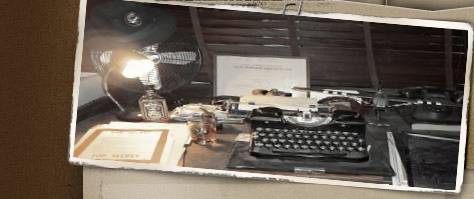 |
| |
|

File No.:
Battle Study # 17
Title: Location where
Capt. Lange of the Oxfordshire
and Buckinghamshire Light
Infantry earned the Military
Cross in Oirschot, The
Netherlands in September 1944
Investigation made at:
Municipality of Oirschot,
The Netherlands
Period Covered: 26 and 27
September 1944
Date: August 2009
Case Classification:
Description of Battlefield /
Combat Scene
Case Status: Case
Closed
REASON FOR INVESTIGATION:
It came to this agency's
attention that in the night of
the 26th to the 27th
of September 1944 a short but
fierce skirmish took place East
of the town of Oirschot, The
Netherlands. Part of a raid
across the Wilhelmina Canal,
British troops laid mines on the
road from Oirschot to Best and
booby trapped several parked
German vehicles. After two
vehicles hit the mines on the
road, they caught flame and a
fierce fire fight ensued. The
raiding party then withdrew
across the canal leaving behind
many German dead, wounded and
damage to enemy vehicles. For
this action, platoon leader
Captain Peter Lange received the
Military Cross medal. In august
2009, Lange's son Ian and
grand-daughter Abby visited the
battlefield of their ancestor.
BattleDetective.com went with
them to the battlefield.
|
.jpg) |
SYNOPSIS:
Peter Lange was born on the
Indonesian island of Java, a Dutch
colony and therefore was Dutch by
birth. His parents later moved to
England and sent young Peter to
school in England and he became a
British citizen. Young Peter soon
joined the British Army and at 18 he
became a weapons instructor. On
December 11th 1942, at age 19, he
became a 2nd Lieutenant in the
King's Regiment, was promoted to
Lieutenant on June 12th 1943 at age
20, was promoted to Captain on the
June 7th 1944 (D-Day+1 of Operation
Overlord) at age 21 and to Major at
the age of 22 on April 14th 1945. He
commanded an Infantry Company at
that time.
Captain Lange wrote a diary of his
wartime experiences and described
events in great detail. In this
Battle Study we focus on one
specific military action; an
aggressive raid across the
Wilhelmina Canal into the
German-held outskirts of the Dutch
town of Oirschot. Captain Lange's
leadership and personal actions
earned him the prestigious Military
Cross. Unfortunately he died in
2003. He never retraced his war-time
steps. A few month short of 65 years
after the heroic actions, Captain
Lange's son Ian and his 11 year old
grand-daughter Abby toured the
battlefield. Being a ‘local’, Battle
Detective Tom was their guide.
Citation
Below is the citation, describing
how Captain Lange earned his
Military Cross. Although Captain
Lange's war-time diary is in much
more detail, we have decided to use
the citation as the base for this
Battle Study. We have added
footnotes and hyperlinks to
illustrate the raiding party’s
actions across the Wilhelmina Canal
into enemy territory, inflicting
extensive damage to enemy vehicles,
personnel and occupied houses.
|
DiagramIn his diary, Captain
Lange has made a very comprehensive
diagram which is very helpful to the
raid's account. We have included it
here:

CITATION |
|
THE MILITARY CROSS
Captain (temporary) Peter LANGE
(255741)
The King's Regiment
(Ox and Bucks LI)
|
"On the night 26th/27th
September, 1944 Captain LANGE in
command of a party of eight men of
his platoon was ordered to
cross the WILHELMINA CANAL by boat
with instructions to do as much
damage as possible to enemy vehicles
using the main BEST – OIRSCHOT road.
The far bank was known to be held by
the enemy but the exact positions of
their posts were not known. Having
once crossed the canal Captain
LANGE was faced with some
1100 yards of flat ground dotted
with houses, which he had to get
his party across before taking up
his position to carry out his task
on the main road. The raiding party
crossed the canal without
interference though another party
not far to his left was heavily
fired on and had to return. Captain
LANGE made rapid progress passed the
houses that were between the canal
and the road, most of which were
occupied by the enemy who could be
heard talking in the doorways. On
reaching the road,
Captain LANGE laid two strips of
mines across it to blow up
vehicles approaching from either
directions and took up a position in
between. Here his party waited for
thirty minutes while enemy soldiers
stood, talked and smoked not ten
yards from their position.
Then two vehicles approached
simultaneously from either
direction. Both blew up and caught
fire. Enemy from the neighbouring
houses tumbled out to see what was
happening and
in the glare of the fires about
twenty of them died under LMG fire.
Captain LANGE then withdrew his
party to the canal bank firing into
every house as he passed to do
maximum damage to the enemy and to
delay the enemy who were now
pursuing him in force. On reaching
the bank a party of Germans attacked
from the west. The raiding party
threw all their remaining grenades
and embarked under cover of their
explosives.
Half-way across the water an enemy
grenade sank the boat and the party
swam ashore under heavy fire. The
raiding parties casualties were one
man wounded, who was brought in, and
one missing. The latter was probably
drowned on the return journey. Just
before dawn
another five explosions were heard
from the area in which Captain LANGE
laid the mines and two more
fires were observed. At least twenty
and probably many more enemy were
killed or wounded. The success – the
great success – of this hazardous
and important operation was due in
great measure to the remarkable
courage, nerve and inspired
leadership of this officer, whose
behaviour under fire has invariably
been beyond praise."
|
Witness statements of citizens of
the "Moleneind" hamlet near Oirschot
during battlefield visit
During our visit to the area of
Captain Lange’s raid, we talked to
several residents of houses along
the route of advance from the point
where the raiding party crossed the
canal to the Best-Oirschot road.
Their homes are located along a
rural road named "De Braken" today.
In the front yard of the house on
No. 10 De Braken we talked to
Mr. Johannes Van Nunen and Mrs.
Wilhelmina Van Nunen-Bierkens.
After we had introduced ourselves
and explained the reason for our
visit to the general area, they
stated:
|
We then moved to the house on No. 1
Wevershoek and talked to
Mr. Theodorus Bressers, who
stated:
- that he was 15 years old in
1944;
- that his Father had died in
1942;
- that he was the youngest of
ten (10) children;
- that his older brothers, in
particular Martin Bressers, were
resistance workers and were
helpful in hiding downed Allied
pilots and people wanted by the
German secret police;
- that he had lived North of the
Best-Oirschot road in 1944 and
that he had visited the
battlefield the day after the
raid;
- that he had found many spent
cartridges, apparently from a
machine gun position at a point
along the route towards the canal;
- that his home in 1944 was at
the end of the interlocking fields
of fire from both the British
raiding party and the Germans in
the farm West of his current home;
- that at least one German dead
was found near his home in 1944 of
whom it is unknown whether he was
killed by the British soldiers or
by friendly fire;
- that after the war he had
built a house along the dirt track
named "De Braken" and had 'his'
stretch of road renamed "Wevershoek";
- that the terrain has seen some
changes after 1944 and that the
dirt track running parallel along
the road, where Capt. Lange had
set up his Bren gun position, is
now at the edge of his garden
today;
- that he regrets the fact that
Captain Lange died in 2003 as he
would have enjoyed meeting him in
person.
|
|
CONCLUSIONS:
The late 1970's and 1980's brought
certain changes to the terrain in
the sense of redevelopment of the
small-scale pastures and meadows in
the area. In a government stimulated
program, focused on enlarging
adjoining agricultural property by
means of the honest exchange of land
(named 'ruilverkaveling' in
Dutch), the terrain's features
changed. For example, small
vegetable patches changed into
larger pastures. Drainages ditches
and dirt tracks were moved
efficiently. Despite all this, the
general features of the battle area
remained intact. The wide part of
the canal is still in the same
place. Most of the dominating
houses, farms and barns are still
there. Above all, the terrain is
still an open one from the
Wilhelmina Canal to the
Oirschot-Best Road. It was
surprising, not only to find the
battle area this much unchanged, but
also to listen to recollections of a
battle which is more than a
generation old. |
|
EXHIBITS:
(click on the
thumbnails to enlarge)
_small.jpg) 1) 1)
 2) 2)
_small.jpg) 3) 3)
 4) 4)
 5) 5)
1) Portrait of Captain Lange, with
Military Cross Medal ribbon on
uniform
2) Captain Lange's original WWII
British Army identification discs.
"CE" stands for Church of England
3) Minitiatures of Captain Lange's
war-time medals
4) Display of Captain Lange's relics
at the Veterans's House in Eindhoven
5) Two generations of Captain Lange
overlooking the battlefield |
|
Back to Battle Studies
 |
|
|
|
| |
| |
| |
| |
|













